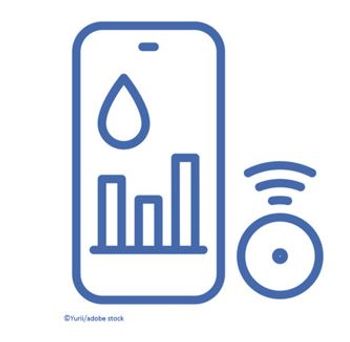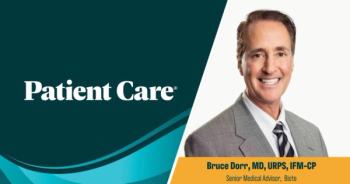
Endocrine Is In: A Top 3 Primary Care Diagnostic Group
Diabetes, obesity, hyperlipidemia, hypothyroidism-these endocrine disorders and others are major reasons why patients come to you. Find out what you know, and don’t know, here.
Endocrine Disorders: The Facts and Figures
Diseases of the endocrine system accounted for 76.6 million of the more than 1.25 billion ambulatory care visits to physician offices and hospital outpatient and emergency departments in the United States in 2009-2010.
In the first article in this series, “
In the second article, we highlighted the number 1 diagnostic category in primary care,
In the third article, we featured the number 2 diagnostic category,
This installment covers the third leading diagnostic category in primary care, endocrine disorders.
These diseases include disorders of lipoid metabolism, obesity, acquired hypothyroidism, “other endocrine, nutritional, and metabolic diseases and immunity disorders,” and “other disorders of the thyroid gland”-and by far the most common endocrine diagnosis in primary care, diabetes.
Find out what you know, and don’t know, about the third biggest reason why patients come to your practice in the pages that follow.
Endocrine Ranks #3 in Primary Care Diagnostic Categories
1. Respiratory
2. Circulatory
4. Musculoskeletal
5. Nervous system and sense organs
6. Genitourinary
7. Mental disorders
8. Injury/poison
9. Skin and subcutaneous tissue
10. Infections and parasitic diseases
Leading Primary Care Diagnoses Fall Under the Endocrine Umbrella
Among the
- Hypertension
- Hyperlipidemia
- Diabetes
- Back pain
- Anxiety
- Obesity
- Allergic rhinitis
- Reflux esophagitis
- Respiratory problems
- Hypothyroidism
- Visual refractive errors
- Osteoarthritis
- Fibromyalgia/myositis, neuritis
- Malaise and fatigue
- Pain in joint
- Acute laryngopharyngitis
- Acute maxillary sinusitis
- Major depressive disorder
- Acute bronchitis
- Asthma
3 of 5 Endocrine Visits Go to Primary Care
• In 2009-2010, 45.8 million
• Diabetes, the leading endocrine diagnosis, accounted for more than 37 million visits, including more than 21 million visits to primary care offices (57% of total diabetes visits). As with endocrine visits, roughly 20% and 10% of total diabetes visits were to medical specialty and surgical specialty offices, respectively.
• Disorders of lipid metabolism accounted for just under 15 million total visits; close to 13 million visits (84.5% of visits) were to primary care offices.
Obesity, Hypothyroidism, and More
•
• Acquired hypothyroidism accounted for 5.6 million total visits, 3.5 million visits to primary care (61%), and 1.6 million visits (28%) to medical specialty offices.
• “Other endocrine, nutritional, and metabolic diseases and immunity disorders”: 9 million total visits, with 4.2 million to primary care (46%); 21% to medical specialty offices; 10% to hospital outpatient departments.
• “Other disorders of the thyroid gland”: 3.8 million total visits, with 1.1 million to primary care (30%); 1.9 million visits (just under half) to medical specialty offices.
Diabetes Prevails in Older Patients
• Close to 10% of the US population (29.1 million Americans) had diabetes in 2012.
• The diagnosis was not made for 8.1 million of those cases.
• The percentage of
• In 2012, 86 million Americans 20 years and older had prediabetes, up from 79 million in 2010.
• Diabetes was the 7th leading cause of death in the United States in 2010, although the condition may be underreported as a cause of death.
With Diabetes, It Gets Complicated
• About 282,000 emergency room visits for adults 18 years or older in 2011 had
• Blood pressure in close to three-fourths of adults 18 years or older who had a diabetes diagnosis in 2009-2012 was 140/90 mm Hg or higher or they used prescription medications to lower high blood pressure.
• Just about two-thirds of adults 18 years or older with a diagnosis of diabetes in 2009–2012 had a blood LDL cholesterol level of 100 mg/dL or higher used cholesterol-lowering medications.
• Cardiovascular disease death rates were about 1.7 times higher in 2003-2006 among adults 18 years or older who had a diagnosis of diabetes than among those who did not.
• Other diabetes complications and comorbid conditions: higher hospitalization rates for heart attack and for stroke, more blindness and eye problems (eg, diabetic retinopathy), more kidney failure.
Obesity Weighs Heavily on Non-Hispanic Blacks
• More than one-third of US adults (78.6 million) are obese.
•
• Age-adjusted rates of obesity are highest in non-Hispanic blacks, followed by Hispanics, non-Hispanic whites, and non-Hispanic Asians.
• Obesity is more common in middle-aged adults than in younger or older adults.
• In men, there is no significant relationship between obesity and education. However, obesity is less likely to occur in women who have college degrees than in those who do not.
More to Come
• In the weeks that follow, we will present more specifics on each of the diagnosis groups that account for the majority of primary care patient visits.
• Next up: Musculoskeletal Disorders
Newsletter
Enhance your clinical practice with the Patient Care newsletter, offering the latest evidence-based guidelines, diagnostic insights, and treatment strategies for primary care physicians.


















































































































































































































































































